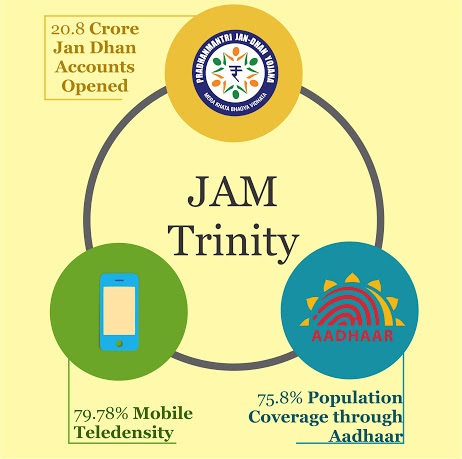Note4Students
From UPSC perspective, the following things are important :
Prelims level: Direct Benefit Transfer (DBT) JAM Trinity
Mains level: DBT's success

Key Highlights:
- India’s Direct Benefit Transfer (DBT) system lauded globally as a “logistical marvel.”
- DBT utilizes digital infrastructure to directly transfer government scheme benefits, covering 310 schemes across 53 ministries.
- The JAM Trinity (Jan Dhan, Aadhaar, and Mobile) post-2017-18 maximized DBT’s impact.
Dignity of the Poor:
- DBT’s overlooked benefit is its preservation of the dignity of the poor.
- Without corruption or leakages, DBT eliminates the need for the poor to parade for government benefits.
- Shift in approach—government benefits reaching the poor directly without intermediaries.
Poverty Perspectives and Historical Context:
- Discussion on poverty perspectives, referencing Michael Young’s “The Rise of The Meritocracy.”
- Challenge to the prevailing view that poverty is an individual’s fault, offering an alternative, rights-based approach.
- Advocacy for understanding poverty from an individual rights perspective and addressing historical contexts.
Rights-Based Approach to Poverty:
- Recognition of basic security rights for citizens regarding food, shelter, and health.
- Emphasis on shared societal responsibility for poverty, especially by the rich and elite.
- Contrast with technical solutions, highlighting the need to work with the poor.
Preserving Dignity in Design:
- Importance of not just providing benefits but also considering how they are delivered.
- DBT as a mechanism that ensures rightful benefits reach the poor while preserving their dignity.
- Elimination of the poverty parade with the government reaching the poor.
Replicating DBT Success:
- Suggestion to replicate the DBT design in other areas, with a focus on the judiciary.
- Reference to the judiciary’s challenges and an appeal to ensure justice reaches the poor efficiently.
- Call for collective efforts to address complex problems.
Challenges:
- Unquantifiable nature of preserving dignity makes it challenging to measure its impact.
- The need for broader societal shifts in perspectives on poverty and shared responsibilities.
Key Phrases:
- JAM Trinity (Jan Dhan, Aadhaar, and Mobile)
- Poverty parade
- Rights-based approach
- Shared societal responsibility
- Technical solutions vs. working with the poor
- Veil of ignorance (Rawlsian perspective)
- Dignity preservation in program design
Critical Analysis:
- Emphasis on the overlooked aspect of preserving dignity brings a unique perspective.
- The article challenges prevailing views on poverty, advocating for a rights-based approach.
- DBT is presented as a successful model, but challenges of replicating its success are acknowledged.
- The article connects poverty perspectives with societal responsibilities and justice delivery.
Key Examples and References for quality enrichment of mains answers:
- Michael Young’s “The Rise of The Meritocracy”
- The Tyranny of Experts by William Easterly
- Reference to the judiciary’s challenges and the appeal of the first woman tribal President.
Key Data and Facts:
- 310 government schemes across 53 ministries utilize DBT.
- Estimated savings of 1.14% of GDP attributed to DBT.
- 79,813 cases pending before 34 judges in the judiciary.
Key Terms:
- Direct Benefit Transfer (DBT)
- JAM Trinity
- Rights-based approach
- Poverty parade
- Veil of ignorance
- Shared societal responsibility
Way Forward:
- Advocacy for applying DBT’s success in other sectors, particularly the judiciary.
- Acknowledgment of complexity but a call for collective efforts to address challenges.
Get an IAS/IPS ranker as your 1: 1 personal mentor for UPSC 2024
